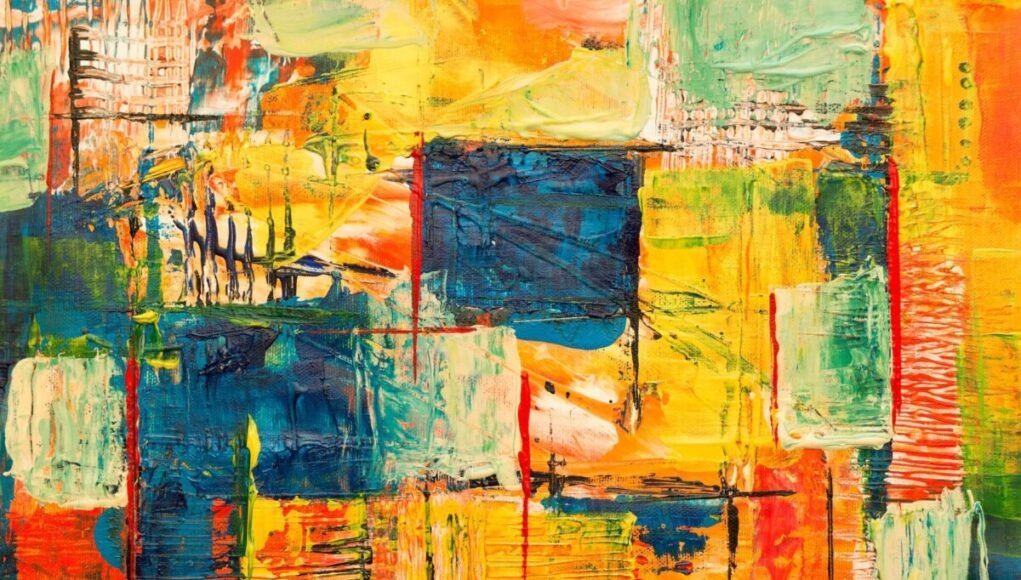Art has captivated humanity across cultures and eras. Beyond aesthetics, art holds an unmatched power to heal, communicate, inspire and transform at both individual and societal levels. By tapping into the deepest realms of human emotion and experience, art provides a medium to process, understand and share the full spectrum of life. Uncovering the profound impact of visual expression reveals its incredible ability to uplift the human spirit, give voice to the voiceless, and catalyze positive change in the world.
Art Therapy: Healing Through Visual Expression
Art therapy utilizes the creative process and visual art production to improve mental, emotional and physical health. As a form of expressive therapy, art therapy provides a means to access emotions, enhance coping, foster self-discovery and reduce anxiety, depression, trauma and stress.
Visual art making allows for nonverbal communication of thoughts and feelings that may be difficult to express through words. The sensory experience and hands-on nature of art materials can promote relaxation, focus and flow. The symbolic nature of visual expression enables indirect exploration of inner conflicts, relationships and unconscious dynamics.
Art therapy techniques span drawing, painting, sculpture, collage, crafts and more. Approaches range from free art exploration to directed thematic projects. For example, creating an anger painting with bold colors and brush strokes provides release, while painting a memory box helps contain painful recollections. Expressive arts foster emotional catharsis and psychological insight to support healing.
Visual Communication: The Universal Language of Expression
Visual communication uses images, graphics, color and composition to convey meaning and messages. As the most universal language, visual expression allows us to share ideas, tell stories and connect across cultural and linguistic barriers.
Symbols transcend verbal languages. Traffic signs, public restroom icons and emoji offer immediate nonverbal comprehension. Logos visually encapsulate brand identity and values. Photography and film document current events and lived experiences in a universally accessible way.
Visual art powerfully expresses emotion. Abstract paintings directly convey mood and feeling through color, line and form. An artist’s self-portrait offers a window into psychological states and personality. Images of atrocities can instantly generate empathy and moral outrage.
By integrating text and images, infographics efficiently communicate complex information. Visual metaphors and allegories represent intangible concepts, from justice to love. Ultimately, visual communication taps into human perceptual and emotional responses to convey meaning in a universally understood way.
Emotional Expression: Art as a Mirror of the Human Soul
Art provides an outlet for expressing and connecting with the full spectrum of human emotions. The act of creating offers contact with one’s inner world and promotes emotional healing. Appreciating art can foster empathy, catharsis and a sense of connection.
Abstract art, particularly painting, directly channels raw emotion through color, line, and form. Intense hues and bold strokes can capture fiery rage, while delicate shading conveys whispered melancholy. Representational art expresses emotion through subject matter, allowing us to perceive the artist’s psychological state.
Art also mirrors collective emotional experiences. Works responding to 9/11 convey society’s trauma and grief. Photographs documenting major events create shared understanding. Artists give form to emotions that unite humanity, such as love, fear, hope.
By materializing inner states, art helps us process emotions and find meaning in our experiences. As a mirror of the human soul, art builds bridges of understanding across the isolating barriers that separate us from each other and ourselves.
Creativity: Unleashing the Human Spirit Through Art
Creativity empowers us to generate novel ideas, solutions and expressive forms. As imagination actualized, creativity leads to innovation, progress and cultural enrichment. Art making is a direct conduit for exercising and nurturing creativity.
The open-ended nature of art fosters flexible, unconventional thinking. Experimenting with materials and techniques yields unexpected outcomes. Representing ideas visually reveals new perspectives. Interpreting art expands mental frameworks and possibilities.
Creative processes like brainstorming, play and design thinking help develop solutions to problems. Artists envision inventive ways of being through works spanning literature, fashion, architecture, technology and more. When shared, their novel ideas and expressions can spark positive change.
On a personal level, creativity enables individual growth and fulfillment. The joy and sense of flow experienced during artistic expression cultivate motivation. As Pablo Picasso said, “The purpose of art is washing the dust of daily life off our souls.” Unleashed creativity breathes life into our spirits.
Inspiration: Art as a Catalyst for Personal Transformation
Art can profoundly inspire us to see the world and ourselves anew. Transformative works illuminate fresh perspectives, ignite passion and drive positive change.
Activist art inspires social reform by creating an emotional connection to issues. Picasso’s Guernica exposed the horrific carnage of war, propelling the anti-war movement. Photographs documenting child labor outrages fueled labor reforms.
Artists portray human potential and new ways of being. Impressionist paintings conveyed the beauty of everyday life. Surrealist works opened doors of perception. Pop art used irony to critique mass consumerism. Visionary art empowers by showing what’s possible.
On a personal level, art lifts our spirits, restores passion and helps us envision desired futures. A painting may spark renewed purpose, while writing channels pain into self-understanding. Art opens windows to new perspectives and possibilities, catalyzing growth.
Art’s ability to move us stems from the imagination, skill and insight of the artist. Their fresh way of engaging with the world inspires our own creativity and personal evolution. We can all find motivation in art’s transformative power.
Cultural Impact: Art as a Reflection of Society’s Values and Beliefs
Art mirrors the ethos of the cultural context in which it is created. Works across the ages provide windows into the core values, beliefs, issues and collective psyche of societies. Artists respond to cultural trends, events and political dynamics by encoding these realities into their expressions.
Representational art from previous eras offers visual records of clothing, architecture, customs and lifestyles. Abstract art movements manifest broader cultural shifts. For example, minimalist art embodied the 1960s reaction against commercialism.
When art challenges conventions, it can drive cultural change. Impressionism’s radical style rejected academic standards. The Feminist art movement advocated for gender equality. Photorealism critiqued pop culture. Counterculture art promotes new social paradigms.
Beyond reflecting culture, art shapes it. Styles spread through society, from fashion to furniture design. Resonant works promote moral dialogue. Over time, art’s influence can transform collective beliefs and norms. Understanding this cultural interplay reveals art’s power to uplift society.
Social Commentary: Art as a Voice for the Voiceless
Art gives creative voice to marginalized groups, shines light on injustice and inspires social reform. Through compelling works, artists can raise awareness, cultivate empathy and activate audiences.
In the 19th century, paintings exposed the inhumane conditions faced by the working class. Images documenting child labor and tenement life compelled moral outrage and legislative action. Modern protest songs unite and empower at demonstrations. Street art broadcasts messages to the masses.
Art humanizes social issues, connecting audiences on an emotional level. Documentary films put faces to homelessness and addiction, while plays dramatize the impact of racism and homophobia. Photographs capturing police brutality outrage the conscience.
By expressing truth to power, art promotes dialogue and progress. Activist art inspires positive change by engaging audiences to care, question and act. Art empowers the vulnerable by amplifying their voices through compelling works that cannot be ignored.
Aesthetics: The Beauty of Visual Expression
Aesthetics examines the nature, perception and experience of beauty within art. Aesthetic theories analyze what makes something visually appealing across cultures and eras. Understanding principles of design provides insight into artistic mastery.
Beauty is subjective – one person’s view of aesthetic perfection may seem displeasing to another. Tastes are influenced by cultural trends, individual preferences and exposure to art styles. Familiarity also breeds aesthetic appreciation.
While subjective, theories identify unifying characteristics that constitute beauty. Symmetry, proportion, composition, color harmony and balance create pleasing imagery. Dynamic works exhibit contrast, movement and variety. Conceptual depth and technical skill elevate a work’s aesthetic merit.
Analyzing masterpieces reveals how great artists apply design principles to create compelling imagery. The flowing lines in Van Gogh’s Starry Night direct the eye in an elegant rhythm. The vivid color contrasts in Matisse’s dancers exude exuberant vitality. Unlocking aesthetics unveils techniques for excellence.
Visual Storytelling: Art as a Narrative Medium
Beyond literal description, art narrates stories through imaginative visual means. Using composition, symbolism and other techniques, artists engage audiences in participatory storytelling.
Renaissance paintings dramatize biblical tales through staging, lighting and expressive figures. Romantic era works convey literary narratives like Dante’s Inferno. Photographers encapsulate metaphorical meanings into a single thought-provoking image.
Film combines visuals, sound and motion to immerse audiences in cinematic story worlds. Graphic novels integrate text and expressive drawings to build engaging narratives. Public murals illustrate community histories and cultural folklore.
Great storytelling art invites the viewer to co-create meaning and narratives. We mentally animate Edward Munch’s The Scream, imagining the cry that contorts his figure. Kara Walker’s black paper silhouettes implicate viewers in racial power dynamics. Interactive art transcends passive observation, directly engaging audiences in unfolding narratives.
Conclusion
Across cultures and eras, art has uplifted humanity by conveying the totality of human experience. Visual expression gives form to our inner worlds, builds bridges of mutual understanding and opens windows to new perspectives.
Art inspires positive change by activating our emotions, intellects, spirits and creativity. As a mirror of culture, art shapes society’s evolution. Its beauty enriches lives, while its messages give voice to truth.
Engaging with art’s transformative power offers benefits at both personal and societal levels. Creativity heals, connects and liberates. Art integrates our fragmented world by honoring the wholeness of human experience. Understanding art’s profound impact inspires awe and activism.
































